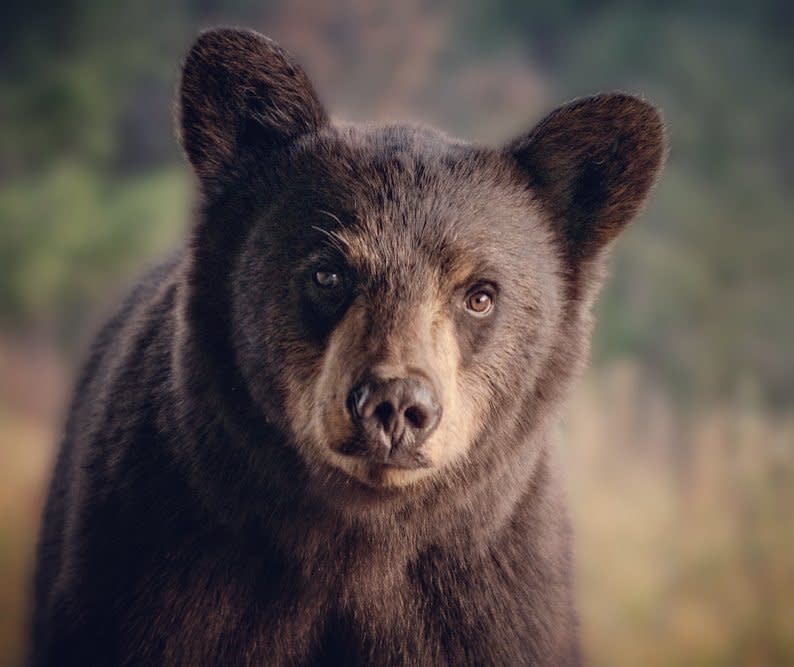Fall is a critical time for both black and grizzly bears, when they enter a state of hyperphagia and attempt to pack on as much fat as possible to see them through their long winter sleep. Black bears with unlimited food and water are known to consume 15,000 to 20,000 kcal per day and drink several gallons of water. A mature black bear may gain 20-30 lbs. per week in preparation for hibernation.
This is also locals’ favorite time to harvest forest huckleberries, wild raspberries, thimbleberries and chokecherries in the Gallatin Canyon. Beware: bears love berries, too! Before picking, scout the area for animal tracks, scat and evidence they may be feeding nearby.
The grizzly is North America 's largest omnivore, meaning it eats both plants and animals. About 80-90% of the grizzly's food is green vegetation, wild fruits and berries, nuts, and bulbs or roots of certain plants. Grizzlies also eat a great deal of insects, sometimes tearing rotten logs apart and turning over heavy stones in search of the insects or their larvae. Bears are also inclined to find other sources of nutrition including moths and ants but have traditionally eaten pine nuts or seeds from white bark pine trees.

This sweet looking black bear is standing on our hot tub on the back deck. I got bear spray (and my camera) and slid open the sliding glass doors. As ...
The remaining percentage of a Grizzly's diet is meat, mostly from the carcasses, or carrion, of big game animals. They also wander widely looking for gut piles and wounded animals left by hunters. However, they will sometimes prey on elk or moose calves or smaller mammals, including house pets. In Yellowstone National Park, spawning trout also play a crucial role in the diets of some bears.
Opportunistic bears sense of smell is seven times greater than a bloodhound’s. They have a keen ability to detect pet food, garbage, barbecue grills and bird feeders—and once they locate a food source, they remember where it is. As they strive to prepare for winter, they will boldly approach whatever smells edible to them.
BE BEAR AWARE!
Keep your yard and outside areas at work clean. Keep BBQ’s clean.
Lock garbage in bear-proof containers or indoors.
Do not leave pet food or bird feeders outside. Do not keep food in your car.
When hiking, travel in groups, make noise and, especially on the trail, carry bear spray.
For more information: www.BeBearAware.org

